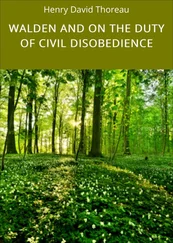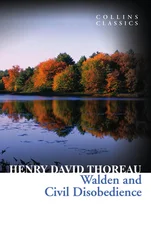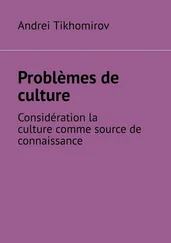J. Walden - Soil Culture
Здесь есть возможность читать онлайн «J. Walden - Soil Culture» — ознакомительный отрывок электронной книги совершенно бесплатно, а после прочтения отрывка купить полную версию. В некоторых случаях можно слушать аудио, скачать через торрент в формате fb2 и присутствует краткое содержание. Жанр: Руководства, Биология, Компьютерное железо, foreign_edu, на английском языке. Описание произведения, (предисловие) а так же отзывы посетителей доступны на портале библиотеки ЛибКат.
- Название:Soil Culture
- Автор:
- Жанр:
- Год:неизвестен
- ISBN:нет данных
- Рейтинг книги:3 / 5. Голосов: 1
-
Избранное:Добавить в избранное
- Отзывы:
-
Ваша оценка:
- 60
- 1
- 2
- 3
- 4
- 5
Soil Culture: краткое содержание, описание и аннотация
Предлагаем к чтению аннотацию, описание, краткое содержание или предисловие (зависит от того, что написал сам автор книги «Soil Culture»). Если вы не нашли необходимую информацию о книге — напишите в комментариях, мы постараемся отыскать её.
Soil Culture — читать онлайн ознакомительный отрывок
Ниже представлен текст книги, разбитый по страницам. Система сохранения места последней прочитанной страницы, позволяет с удобством читать онлайн бесплатно книгу «Soil Culture», без необходимости каждый раз заново искать на чём Вы остановились. Поставьте закладку, и сможете в любой момент перейти на страницу, на которой закончили чтение.
Интервал:
Закладка:
Causes of Failure. —If you insert a blossom-bud you will get no shoot, although the bud may adhere well. If scions cut for buds remain two hours in the sun with the leaves on, in a hot day, they will all be spoiled. The leaves draw the moisture from the bud, and soon ruin it. Cut the leaves off at once. If you use buds from a scion not fully grown, very few of them will live; they must be matured. If the top of the branch selected be growing and very tender, use no buds near the top of it. If in raising the bark to make room for the bud, you injure the soft substance between the bark and the wood, the bud will not adhere. If the bud be not brought in close contact with the stalk and firmly confined there, it will not grow. With reasonable caution on these points, not more than one in fifty need fail.
Time for Budding. —This varies with the season. In the latitude of central New York, in a dry season, when everything matures early, bud peaches from the 15th to the 25th of August—plums, &c., earlier. In wet and great growing seasons, the first ten days in September are best. Much budding is lost on account of having been done so late as to allow no time for the buds to adhere before the tree stops growing for the season. If budding is performed too early, the stalk grows too much over the bud, and it gums and dies. It is utterly useless to bud when the bark is with difficulty loosened; it is always a failure.
BUSHES
The growth of bushes over pastures, along fences, and in the streets, shows a great want of thrift, and an unpardonable carelessness in a farmer. In pastures, so far from being harmless, they take so much from the soil as to materially injure the quality and quantity of the grass. The only truly effectual method of destroying noxious shrubs, is by grubbing them up with a mattock. Frequent cutting of bushes inclining to spread only increases the difficulty, by giving strength and extension to the roots. Cutting bushes thoroughly in August, in a wet season, and applying manure and plaster to promote the growth of grass, will sometimes quite effectually destroy them. Larger trees, as the sweet locust, that are troublesome on account of sprouting out from the roots, when cut down, are effectually killed by girdling two feet from the ground, and allowing to stand one year. The tree, roots, and all, are sure to die.
BUTTER
Raising the cream, churning, working, and preserving, are the points in successful butter-making. To raise cream, milk may be set in tin, wood, or cast-iron dishes. The best are iron, tinned over on the inside. Tin is better than wood, only on account of its being more easily kept clean. No one can ever make good butter without keeping everything about the dairy perfectly clean and sweet. Milk should never stand more than three inches deep in the pans, to raise the best and most cream. It should be set in an airy room, containing nothing else. Butter and milk will collect and retain the flavor of any other substance near them, more readily than anything else; hence, milk set in a cellar containing onions, or in a room with new cheese, makes butter highly flavored with those articles.
Temperature is an important matter. It should be regular, at from fifty to fifty-five degrees of Fahrenheit's thermometer. It is sometimes difficult to be exact in this matter, but come as near it as possible. This can be well regulated in a good cool cellar, into which air can be plentifully admitted at pleasure. Those who are so situated that their milk-house can stand over a spring, with pure water running over its stone floor, are favored. Those who will take pains to lay ice in their milk-rooms, in very warm weather, will find it pay largely in the quality and quantity of their butter. Those who will not follow either of the above directions, must be content to make less butter, and of rather inferior quality, out of the same quantity of milk.
Skimming should be attended to when the milk has soured just enough to have a little of it curdle on the bottom of the pan. If it should nearly all curdle, it would not be a serious injury, unless it should become old. If you have not conveniences for keeping milk sufficiently warm in cold weather, place it over the stove at once, when drawn, and give it a scalding heat, and the cream will rise in a much shorter space of time, and more plentifully. Milk should be strained and set as soon as possible after being drawn from the cow, and with the least possible agitation. The unpleasant flavor imparted to milk from the food of the cows, such as turnips or leeks, may be at once removed by adding to the milk, before straining, one eighth of its quantity of boiling water; or two ounces of nitre boiled in one quart of water and bottled, and a small teacupful put in twelve quarts of milk, will answer the same purpose.
Milking should be performed with great care. Experiments have demonstrated that the last drawn from a cow yields from six to sixteen times as large a quantity of better cream than that first drawn. Careless milking will make the quantity of butter less, and the quality inferior, while it dries up the cows. There are probably millions of cows now in the United States that are indifferent milkers from this very cause. Quick and clean milking, from the time they first came in, would have made them worth twice as much, for butter and milk, as they are now. Always milk as quickly as possible, and without stopping, after you commence, and as nearly as possible at the same hour of the day. Leaving a teacupful, or even half that quantity, in milking each cow, will very materially lessen the products of the dairy, and seriously injure the cows for future use. Great milkers will yield considerable more by having it drawn three times per day. The quantity of milk given by a cow will never injure her, provided she be well fed. As it takes food to make meat, so it does also to make milk; you can never get something for nothing. The best breeds of swine, cattle, or fowls, can not be fattened without being well fed: so the best cows will never give large messes of milk unless they are largely fed.
Churning. —This is entirely a mechanical process. The agitation of the cream dashes the oily globules in the cream against each other, and they remain together and grow larger, until the butter is, what the dairy woman calls, gathered. The butter in the milk, when drawn from the cow, is the same as when on the table, only it is in the milk in the form of very small globes: churning brings them together. The object then to be secured, by any form of a churn, is agitation, or dashing and beating together.
Temperature of the Cream should be from sixty to sixty-five degrees—perhaps sixty-two is best. This had better always be determined by a thermometer immersed in it.
Many churns have been invented and patented; and every new one is, of course, the best. A cylinder is usually preferred as the best form for a churn, and the churning is performed by turning a crank. An oblong square box is far better than a cylinder. In churning in a cylinder, it may often occur that the cream moves round in a body with the dasher, and so is but slightly agitated. But change that cylinder into an oblong square, and the cream is so dashed against the corners of the box that a most rapid agitation is the result, and the churning is finished in a short space of time.
Any person of a little mechanical genius can construct a churn, equal to any in use, and at a trifling expense. It is well to make a churn double, leaving an inch between the two, into which cold or warm water can be poured, to regulate the temperature of the cream. This would be a great saving of time and patience in churning. Those who use the old-fashioned churns with dashes can most conveniently warm or cool their cream, by placing the churn containing it in a tub of cold or boiling water, as the case may require, until it comes to the temperature of sixty or seventy degrees.
Читать дальшеИнтервал:
Закладка:
Похожие книги на «Soil Culture»
Представляем Вашему вниманию похожие книги на «Soil Culture» списком для выбора. Мы отобрали схожую по названию и смыслу литературу в надежде предоставить читателям больше вариантов отыскать новые, интересные, ещё непрочитанные произведения.
Обсуждение, отзывы о книге «Soil Culture» и просто собственные мнения читателей. Оставьте ваши комментарии, напишите, что Вы думаете о произведении, его смысле или главных героях. Укажите что конкретно понравилось, а что нет, и почему Вы так считаете.












